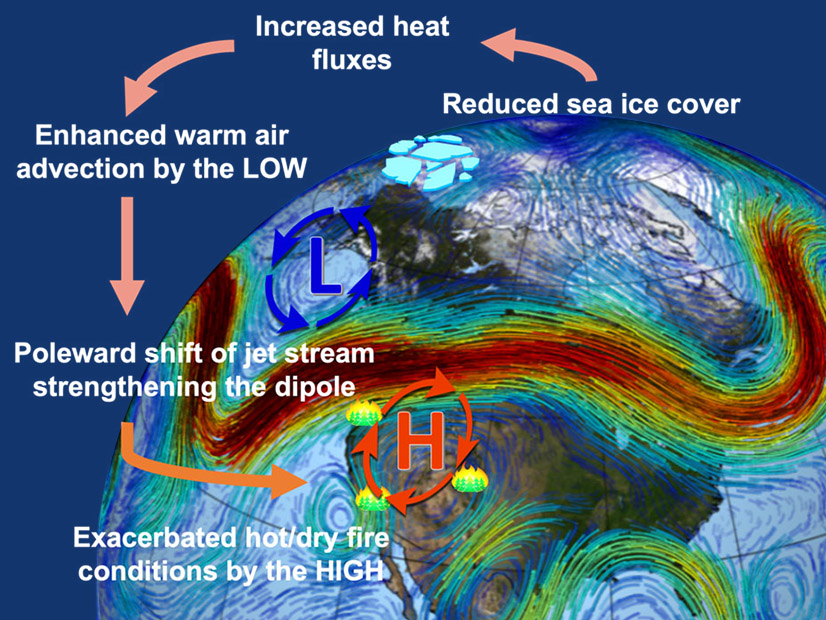A new study has solidified the link between melting Arctic Ocean ice and the wildfires that regularly ravage the Western U.S.
The study was spearheaded by the Pacific Northwest National Laboratory (PNNL) and published in October in Nature Communications. The results were presented Dec. 16 at an American Geophysical Union meeting in New Orleans.
The link between melting Arctic sea ice and increasing Western wildfires has been a theory among climate scientists. Using sophisticated computer models at the Lawrence Berkeley National Laboratory, the new study nails down how the link occurs, Hailong Wang, an Earth scientist at PNNL and a co-author of the report, told NetZero Insider.
“There had been a lack of consensus in the community about potential mechanisms,” Wang said.
The PNNL team — with data scientist Yufei Zou as the lead author — has been studying how temperature changes in the Arctic affect other regions.
“It was hard to tease out the step-by-step observations,” Wang said. The study’s computer modeling pinned down the scenario.
Global warming melts the Arctic ice into the ocean. Consequently, sunlight directly hits the water, which absorbs the heat and later releases it back into the atmosphere, creating a counterclockwise vortex of warm air. The vortex pushes the polar jet stream out of its typical pathway, diverting moist air away from the Western U.S. That creates a second clockwise-spinning vortex beneath the polar jet stream as it crosses the West, dropping warm dry air on the region. That warm dry air makes conditions more conducive to wildfires.
“It’s not a perfect analogy, but teleconnections like this are a bit like the butterfly effect,” Wang said in a PNNL news release.
In the interview, Wang said understanding how this scenario works will help in predicting dry weather conditions in the West.
PNNL will tackle follow-up studies, creating computer models that will analyze how precipitation and other variables in nature factor into this domino effect and how to predict fire-prone conditions, Wang said.

